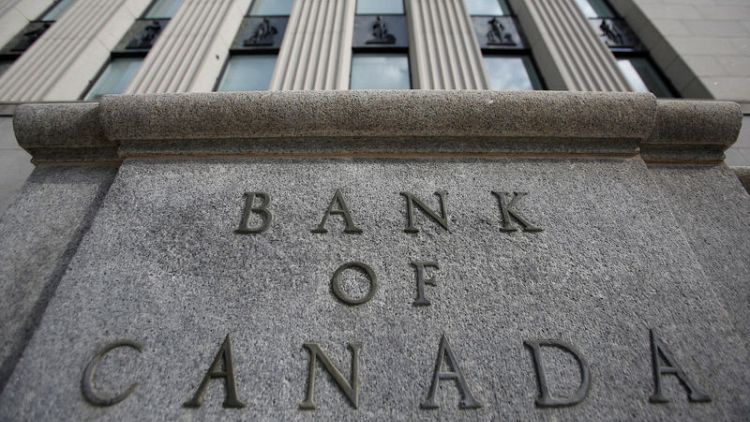By Fergal Smith
TORONTO (Reuters) - The Bank of Canada's estimate of the neutral interest rate is too high for Canada's debt-laden economy, bond investors say, and a failure to lower the estimate when it is due for an annual review in April could hurt its use as a signpost for monetary policy.
The neutral rate is seen as the sweet spot for monetary policy, where it neither boosts nor restrains growth. The Bank of Canada has said its 2.5 percent to 3.5 percent estimate of the range for neutral is where interest rates are ultimately headed. Too wide a gap between the central bank's signpost for interest rates and where the market sees rates over the long run could weaken the central bank's ability to guide expectations that impact the economy, economists say.
"Clearly, the markets are not pricing a three-ish neutral rate that the central bank sees as their base case," said Tim Alt, a portfolio manager at Aviva Investors. "Monetary policy is transmitted to the real economy via financial markets. So, if a central bank's forecasts are unrealistic, it reduces the effectiveness of monetary policy."
One of the consequences could be greater financial market volatility that hurts economic growth as markets worry about a policy mistake, Alt said. Canada's 5-year forward, 5-year swap rate, seen as a benchmark for long-run rate expectations, has fallen nearly 60 basis points since October to about 2.60 percent. Meanwhile, the market's measure of inflation expectations has been stuck below the Bank of Canada's 2 percent target since 2014, and money markets are betting that the overnight rate will be lower in one year's time than the central bank's current policy rate of 1.75 percent.
TAKING CUE FROM FED
A key input into one of the models used last year to estimate the neutral rate by Bank of Canada staff was the U.S. neutral rate. Federal Reserve policymakers downgraded in December their view of the neutral rate to 2.75 percent from 3.0 percent.
Canada's neutral rate should be below that of the United States, said Hosen Marjaee, a senior portfolio manager at Manulife Asset Management. Portfolio managers at PIMCO said in a research note in January that their estimate for Canada's neutral rate was between 2 percent and 3 percent, with a bias to the lower end of the range.
"I think a base case is yes, they will probability lower it, but there is a wide uncertainty band," said Royce Mendes, a senior economist at CIBC Capital Markets. "The reason that they would have to lower it is really just evidence on the ground. Look at what is happening to interest rate-sensitive sectors right now."
Sectors that are sensitive to higher interest rates include housing and auto sales, which have weakened in recent months, while data on Friday showed that Canada's economy grew in the fourth quarter at the slowest pace in 2-1/2 years.
While Canada's economy had been boosted in recent years by record amounts of consumer borrowing, credit growth has slowed after the Bank of Canada raised interest rates by about 125 basis points since July 2017. The lagged impact of higher rates could point to further slowing.
Canada's high levels of consumer debt "makes it highly unlikely to us that a sustainable neutral rate could be as high as 3.5 percent," PIMCO said. "We believe the economy would buckle under the strain of an overnight rate this high."
(Reporting by Fergal Smith; editing by Jonathan Oatis)



